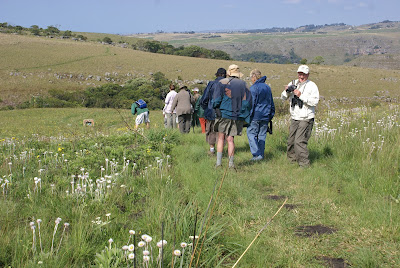| Mystery Bird No.3 (Photo Stan Culley) |
The answer to the Mystery Bird No.3 quiz was a juvenile Cape Robin-chat. The photo was taken in Stan's garden at Port Edward.
To see No.4 see here.
The answer will be revealed on 30th December 2011.
Based on the South Coast of Kwazulu Natal, South Africa, our catchment area is between Scottburgh and Port Edward. Members are welcome from any part of the world. For more information see the 'About Us' or 'Contact Us' pages.
| Mystery Bird No.3 (Photo Stan Culley) |
 |
| (Photo Andy Ruffle) |
 |
| Helichrysum eklonis (Photo Andy Ruffle) |
 |
| Helichrysum eklonis (Photo Andy Ruffle) |
 |
| Pelargonium species (Photo Andy Ruffle) |
 |
| Helichrysum species (Photo Andy Ruffle) |
 |
| Eulophia hians (Photo Andy Ruffle) |
 |
| Orchid species (Photo Andy Ruffle) |
 |
| (Photo Andy Ruffle) |
 |
| (Photo Doug Butcher) |
 |
| (Photo Doug Butcher) |
 |
| (Photo Doug Butcher) |
| Giant Earthworm at Oribi Gorge NR (Photo Paddy Norman) |
 |
| Andrew Pickles, Wolf Meyer and Mike Neethling scan the cliffs from 'Mikes Point' for vulture nests (Photo Andy Ruffle) |
 |
| Andrew Pickles and Mike Neethling confer as they record the status of each vulture nest site. (Photo Andy Ruffle) |
 |
| Mike & Andrew scan 'Francolin face', whilst Andy records the results (Photo Wolf Meyer) |
 |
| click photo to visit IVAD website |